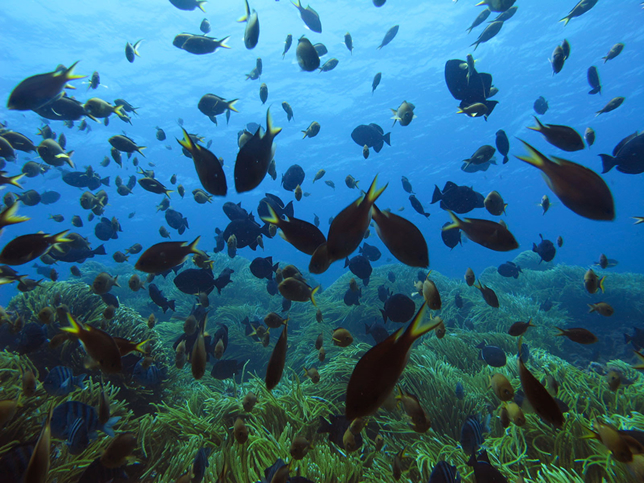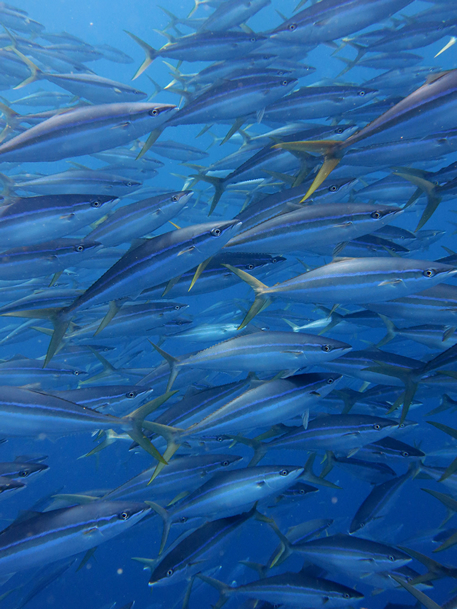| Expeditions: Arquipélago de São Pedro e São Paulo - 2016
The yearly Programa de Monitoramento de Longa Duração das Comunidades Recifais de Ilhas Oceanicas (PELD)
and BioprospecMar expedition to St Peter and St Paul’s Archipelago took place between September 21st and
October 11th. St Peter and St Paul’s Archipelago (SPSPA) is a seamount of the Atlantic ridge, situated 1100km from
the Brazilian coast (00°55’N, 29°21’W). It rises just 18 meters above the surface, and consists of 11 small, barren
rocky islands. Due to its isolation and geographical position, biodiversity is low compared to the coast with some
functional groups missing or composed of few individuals and species, such as fish species associated to soft
bottoms and roving herbivores. Instead, the archipelago harbours several endemics such as the damselfish
Stegastes sanctipauli and the fairy basslet Anthias salmopunctatus.
The PELD program includes fish and benthos surveys on all the oceanic islands in Brazil (Atol das Rocas, Trindade
Island, Fernando de Noronha and the SPSPA) and has now been running for three years. For the BioProspecMar
project, marine organisms are collected that will be used for research on anti-cancer substances, mainly ascidians.
Collected data also included dna samples from Grapsus grapsus crabs, the cardinal fish Apogon americanus and
the spiny lobster Panulirus spp., isotope samples of Kyphosus vaigiensis, collection of Myripristis jacobus for diet
studies and algae, corals, zoanthids and sediments for a range of demands from universities in Brazil and the USA.
Weather was good during the expedition, and data was collected successfully. Abundance and biomass of fish is
high in the archipelago, due to it being subjected to less stressors than the coast, although fishing do occur. Water
visibility ranged between 25 to 50 meters, and we had the pleasure to also observe oceanic species such as large
devil rays (Mobula tarapacana), bottlenose dolphins (Tursiops truncatus) and wahoos (Acanthocybium solandri)
under water in addition to large numbers of Caranx lugubris, Melichthys niger and moray eels (mainly Muraena
pavonina).
The expedition consisted of Moysés Cavichioli Barbosa (LECAR -UFF), Linda Eggertsen (UFRJ/LECAR-UFF), Luisa
Fontoura (UFSC) and Bianca del Bianco Sahm (USP).

The São Pedro and St Paul’s rocks Archipelago. Credits: Linda Eggertsen

Researcher doing fish visual census. The green algae Caulerpa racemosa forms large monospecific patches and
grows extremely tall in the SPSPA. Credits: Bianca Sahm

Shoals of the brown chromis Chromis multilineata cloud the reef. Credits: Bianca Sahm

The whitespotted filefish Cantherhines macrocerus frontside. Credits: Moysés Barbosa

Shoals of rainbow runner Elagatis bipinnulata are common in the Archipelago. Credits: Moysés Barbosa
Written by: Linda Eggertsen
|









